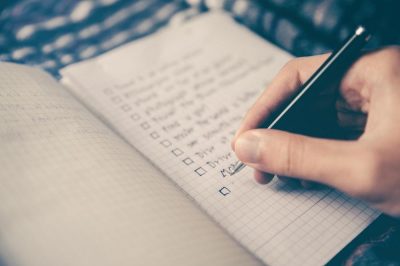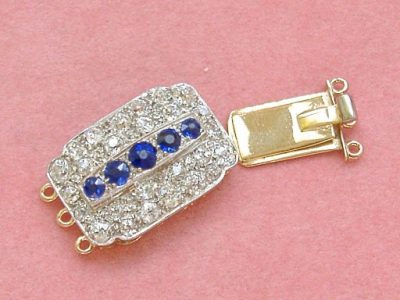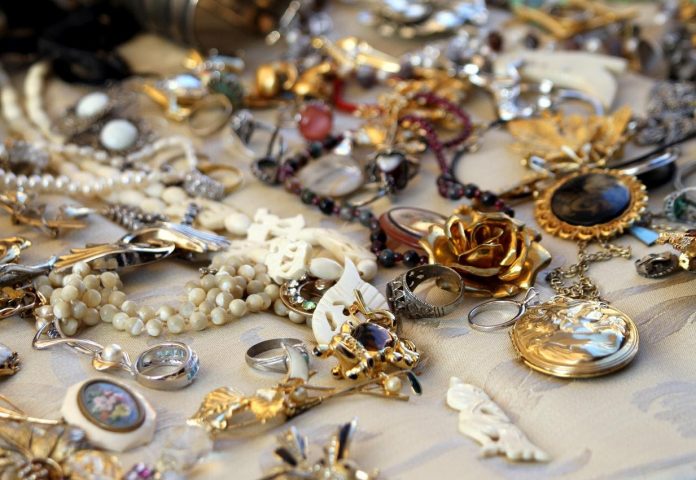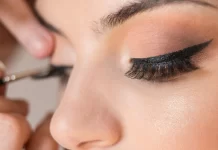According to auction house Bonhams, there is a lot of vintage jewellery lying around in British people’s homes, they say around £60 million-worth. Most of it has been handed down from many generations, found at sea, or even bought at a store and you never knew what it was worth.
The good thing is, there are appraisers whose job is to find out how much your stash is worth. You could be looking to require some finances or perhaps it is time to get rid of your material possessions, whatever the personal reason, there are many ways of finding the right place to go to, and also to find out how much your precious items are worth.
Having watched the number of regular people on television shows such as Antiques Roadshow, the popular TV show built around appraising old and antique items. It is apparent how over the past two decades, many people have been looking to invest not only in stocks and shares but also in precious gemstones such as diamonds and gold or collectibles. If you’re interested in watching the program click here.
Some items cited in the show were brooches that were bought for a mere £1.50 years ago and found that it was worth almost £15,000 now. It’s an exciting thought when you ponder how valuable some of the items sitting on your dressing table could be. Let’s dive in to see how you or the professionals can value your items to determine the worth.
If you have ever inclined towards finding out the value of those jewels lying in your box, now is the time to go for it. This article will cover a few good tips for you to determine the value of your items within minutes.

Obtain as Much Information About It as Possible
This is the first and foremost step and done by inspecting the item carefully and thoroughly. Things to look for:
- What kind of gemstones does it have? There is a vast difference between gems such as diamonds because in the old day’s majority work was done by hand and tools that produced much lumpier and inconsistent cuts. These were often referred to as ‘old mine cuts’ which they don’t make anymore. Here is some information for you to learn more about this https://engagementrings.lovetoknow.com/wiki/What_Is_a_Miners_Cut_Diamond. Whereas in the modern day the gems are cut to fine angles using machinery.
Colored gems are on the rise. If your piece has colored gems there is a possibility, they could be ruby’s, emeralds, or sapphires. If they look ‘untreated’ you may just have a winner in the midst. If, however, it is made of a material such as silver, amethysts, or rhinestones, these are the lesser rare stones that may not be worth that much.
- Check for Markings like a signature, a stamp of sorts, or a date and initial. This insignia is often included by the maker if the item is ancient. It is not always visible to the naked eye, which means you would need a magnifying glass. An example marking would be, one that looks like an Eagle or a dog’s head is indicative of a French manufacturer. Some of the best pieces of jewellery were made in France.
If you have pearls, for instance, the only way to tell the difference between man-made and natural is through an x-ray if you’re a novice. But specialists can tell just by looking at its shape and overall sheen or glow.
- The workmanship should tell you a story. In the past, the way people work, especially on vintage jewellery was vastly different in comparison to modern times. For instance, most products such as these were made by hand out of personal designers’ preferences, and the choice of designs was different too. A lot of the valuable items had an unusual look to them. If your item looks out of the ordinary and like nothing you have seen before it’s a good thing.
The best objects have been meticulously carved and not just in the face side but also on all four of the sides with everything sturdily put into place.

- Are they any clasps? And if so, what kind? Surprisingly enough, such trivial things as clasps can mean the difference between a valuable piece and costume jewellery. Bracelets, pins, some earrings, and necklaces made in the 60s and 70s, often had ‘box or rings’ clasps. As the years went by, this changed to the more modern type of ‘lobster, trombone clasps and C-clasps’. These fasteners are just as treasured as the entire piece and can tell a lot about the era it was made in.
Going Back to Basics
Now that you have your checks as thoroughly as possible and are satisfied with your findings, do an online search. Put all the variants that you gathered, together on a list and check each one off as you go along. There are various online sources that you can look through that will give you either some further tips on how to identify what’s in your hand or point you in the right direction to whom to speak to.
Look for specific things such as where you bought it from (a jewellery store, auction house or a flea market) so you can contact them or look for similar merchants, what it’s going for on online stores that are selling alike items, contact some vintage stores or manufacturers directly and ask them to take a look at it for you.
It is worth mentioning that selling it on popular websites such as eBay or Craigslist, won’t be the best option if you want to get its money’s worth. Talking to a professional, however, will.
Chances are, they will want to inspect the piece themselves and then if they see any worth, they will offer you an appraisal. Typically, this kind of service will cost you a nominal fee, which will be worth it because they can help you sell it in the safest and best way too.



















